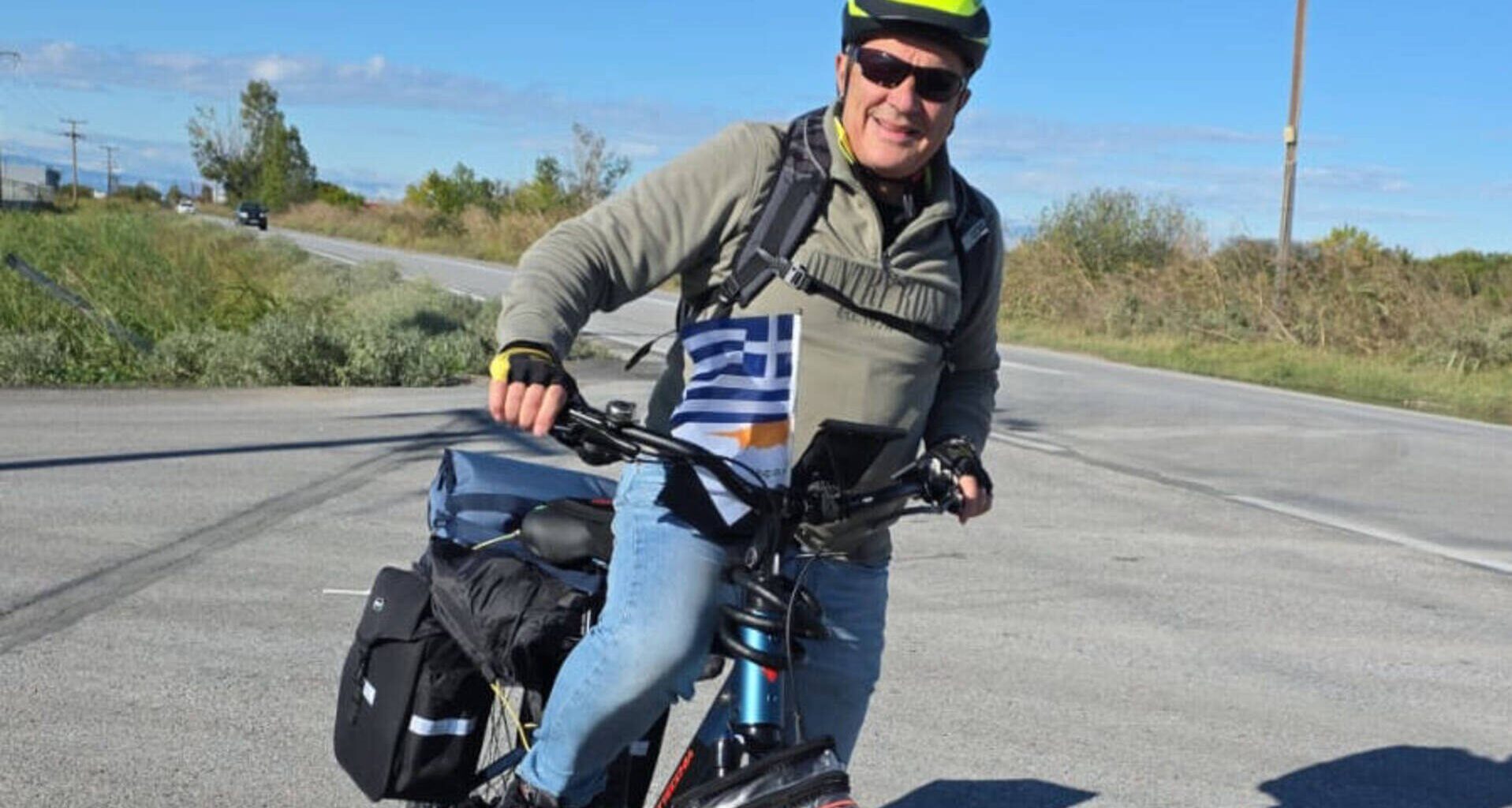From the industrial fringes of Thessaloniki, the metropolis of layered Roman, Byzantine, and Ottoman ghosts, I launched southward. The city’s endurance, symbolized by the White Tower, felt like a silent blessing. My escape route—a provincial road avoiding the forbidden highway—was fraught with roaring trucks whose slipstreams were a physical trial (δοκιμασία). Yet, there was no retreat. I crossed the three great rivers—Axios, Loudias, and Haliacmon—whose old, perilous bridges challenged my resolve. The first day was a baptism by contrary winds and an overcast sky, culminating in a momentary, humbling disorientation that was swiftly remedied by the kindness of strangers, Lefteris and Georgios, who patiently set me right.
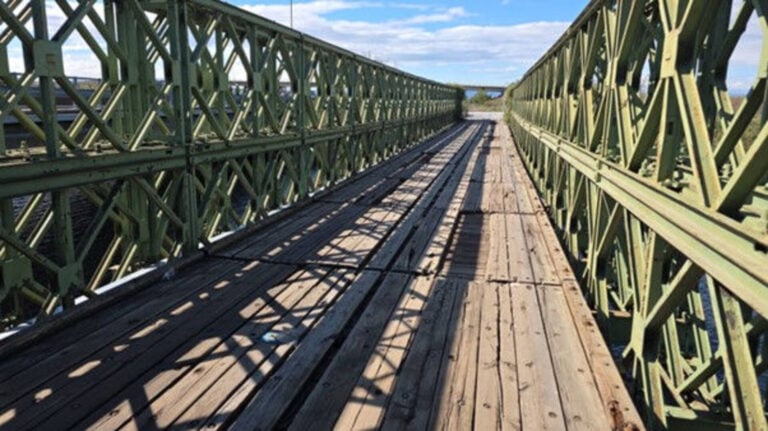 Loudias River old bridge.
Loudias River old bridge.
The northern awakening
Midday became a sacred ritual at a roadside bakery. The trinity of crisp tiropita, a cool Fredo Espresso, and a traditional koulouri was not just sustenance; it was a snapshot, a single-frame definition of modern Greece. With renewed energy, I pushed toward Methoni, where I had a private audience with Greek history. The bronze statue of Philip II of Macedon, standing proudly, his gaze fixed inland, stirred a forgotten surge of ancestral pride that had been left behind when my family immigrated to Australia.
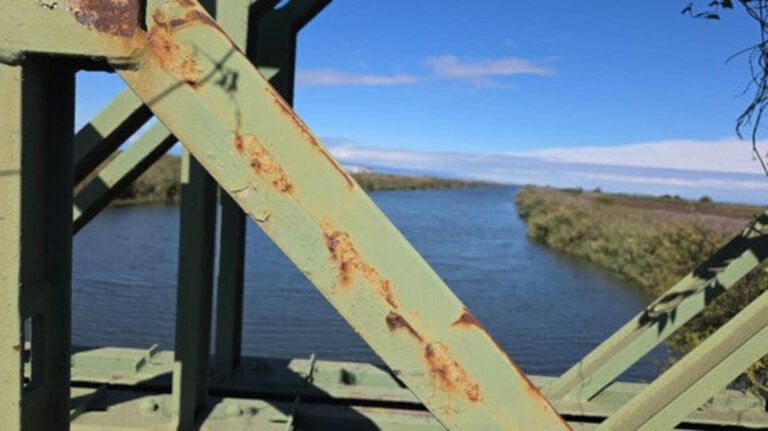 Loudias River.
Loudias River.
Coastal lull and mountain’s call
The arrival at Makrygialos offered a coastal lull, a reward of endless sea views and the hazy, snow-crowned majesty of Mount Olympus. Here, I learned the true, potent meaning of Filotimo—the unique Greek code of honor and selfless dignity. My attempts to buy the locals coffee were always gently refused: “You are the visitor; we treat you.” The day’s fatigue melted during a walk into the magnificent sunset (ηλιοβασίλεμα), followed by a glass of ouzo. The next morning, Rizogalo (rice pudding) dusted with cinnamon brought an instant, sweet, comforting memory of my late mother kyria Loula.
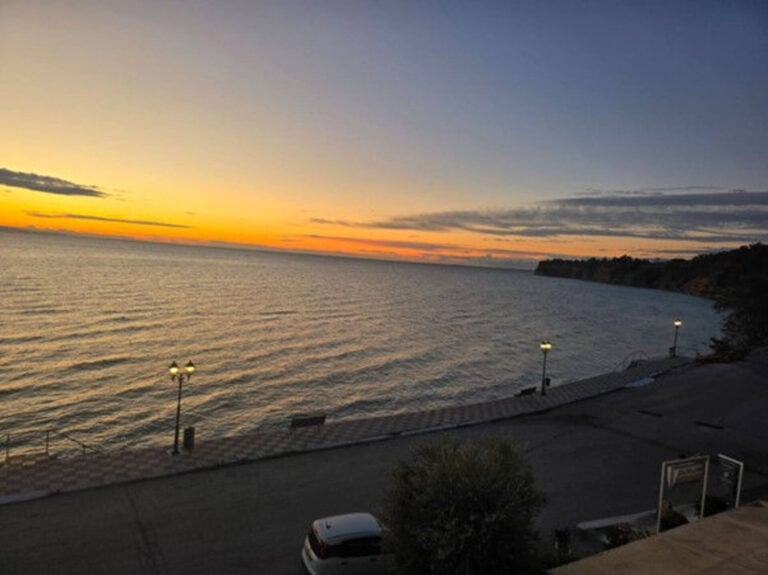 Makrygialos from the hotel Achilleon.
Makrygialos from the hotel Achilleon.
Turning inland, my eyes were constantly pulled toward the imposing, mythical Olympus. The path led to Nea Efessos, a settlement steeped in the tragic memory of the Asia Minor Catastrophe, founded by refugees from ancient Ionia. After traversing the Vale of Tempi, I met Dimitris, a motorcyclist whose raw description of deep friendship (πραγματική φιλία) resonated profoundly.
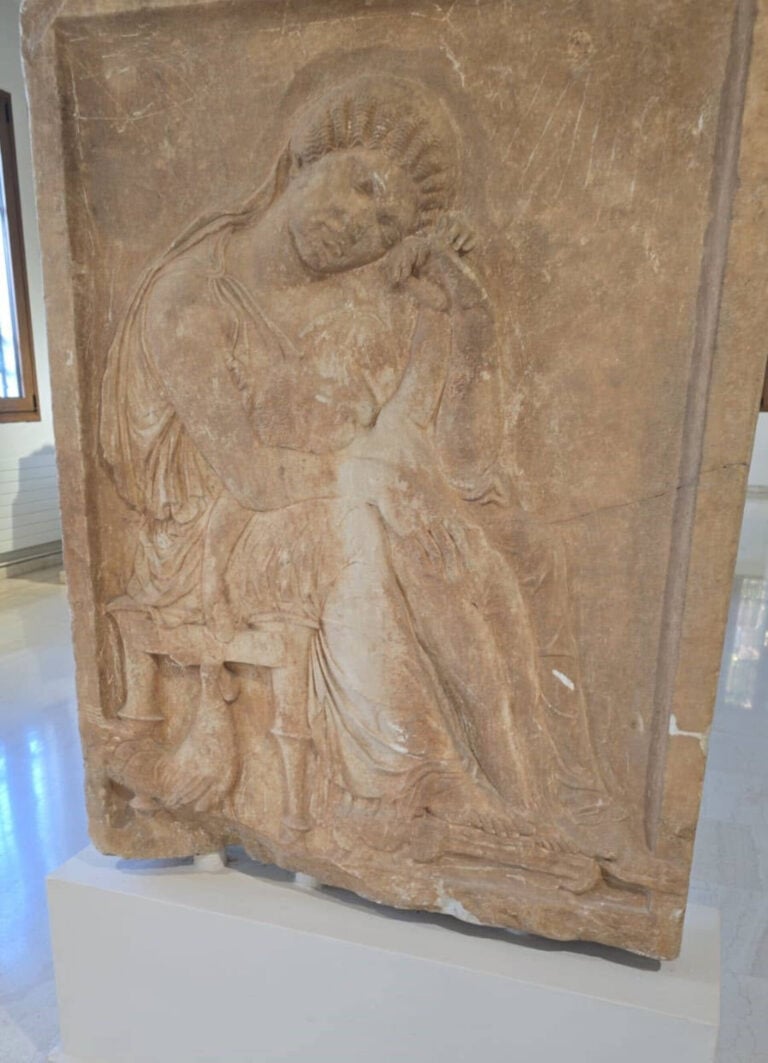 Marble Stele at Dion Museum, “woman with child”.
Marble Stele at Dion Museum, “woman with child”.
The true climb began as I reached Dion, the city steeped in myth. This ascent was a personal battle, testing my strength as fertile plains surrendered to the foothills. At the archaeological site, the ruins lay sprawled among bubbling springs.
 Ancient Theatre in Larisa, repairation works with marble.
Ancient Theatre in Larisa, repairation works with marble.
The ancient theater and museum whispered tales of millennia, filling me with awe (δέος). Alone, surrounded by the aura of gods and philosophers, a profound thought took hold: “Every road has its own story… If we, too, learn this story, if we see the dream shining in our hearts, everything will become much brighter.”
Later, enjoying moussaka and local wine at a family guesthouse, the embroidered sheets and mosaic frames felt like a direct connection to the heart of Greek domestic tradition, though the evident neglect of the ancient theatre was a disappointment that tempered the spirit.
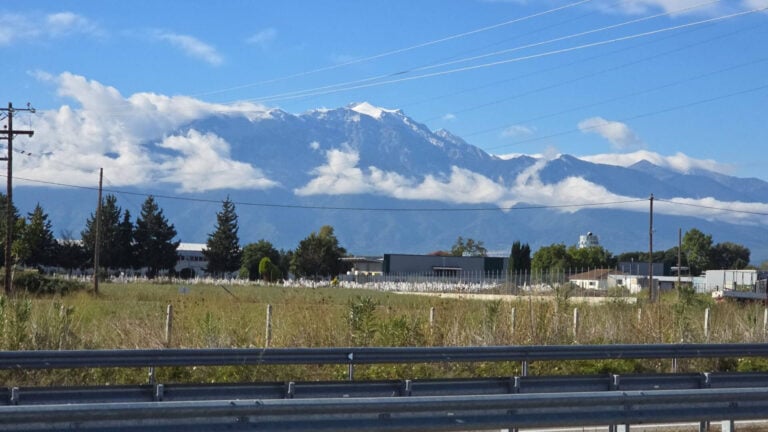 View of Olympos from the road to Larisa.
View of Olympos from the road to Larisa.
The physical and emotional cost of the journey
The route to Larissa was an emotional and physical crucible. A stop at a greengrocer offered a moment of unexpected sorrow: two young boys selling grapes whose eyes were sadly blank when I mentioned Delphi, a disheartening disconnection from their ancient heritage.
 Georgios and Lefteris at Nisseloudi correcting my path.
Georgios and Lefteris at Nisseloudi correcting my path.
Determination, not raw bravery, was my fuel. The road to Larissa, the capital of Thessaly, was a brutal 15-kilometer ascent that finally overcame me. Exhaustion led to a sudden, painful fall into a thorny bush, my bike collapsing on top of me—a sharp, stinging taste of the raw, untamed mountains. A respectable, elegantly dressed lady stopped to help, only to prick her own hands, adding a surreal, almost comedic trauma to my fall.
On the road to Larisa
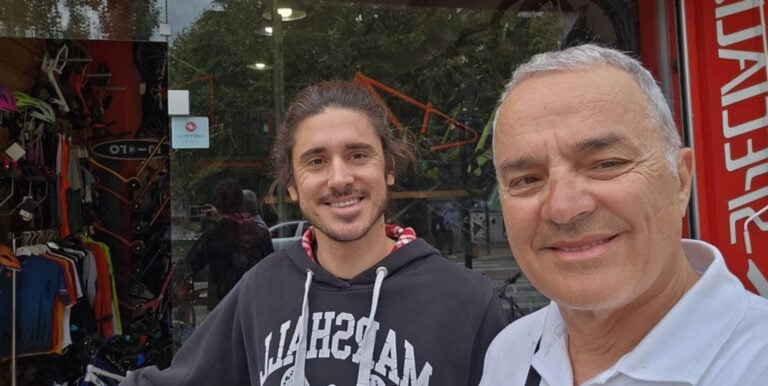 Nektarios and I outside his bike shop in Larisa.
Nektarios and I outside his bike shop in Larisa.
In Larissa, a necessary shock of urban life, I found a reprieve and the purest act of Filotimo. After hundreds of kilometers, my bike needed service. The bicycle shop owner, Nektarios, completed the work but refused to be paid, only reluctantly accepting five euros after repeated insistence. This selfless denial of payment was a humbling reminder of that unique Greek spirit.
 Phillip II of Macedon, Methoni.
Phillip II of Macedon, Methoni.
Pushing on towards Farsala, the journey delivered new challenges. A gravel road, exposed and unwelcoming, led to repeated stops to clean the mud from my wheels. The bare, desolate landscape filled me with a deep fear and a feeling of being exposed. This anxiety culminated when six aggressive shepherd dogs rushed out from a nearby farm, chasing me with fierce barks. I pedalled desperately, the fear of being torn to bits propelling me across the muddy terrain, until I finally outran them—a truly terrifying moment that tested my absolute will to survive.
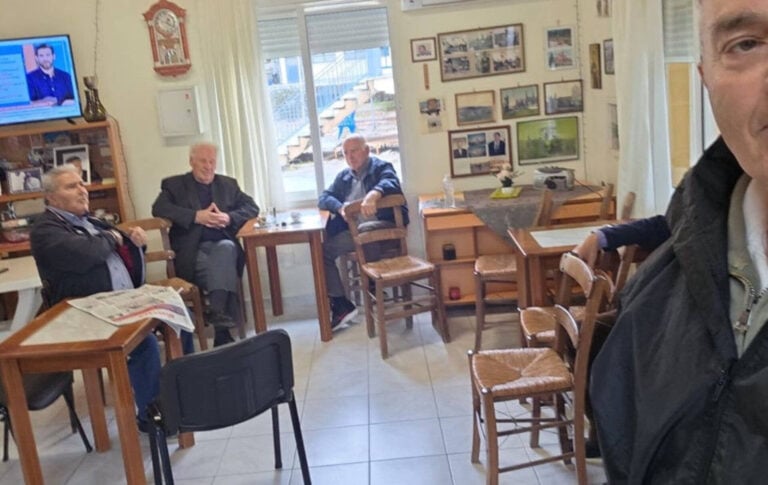 At Zappeion village KAPI with Costa, Vasili, Niko and Thomas.
At Zappeion village KAPI with Costa, Vasili, Niko and Thomas.
Echoes of history and the resilience of villages
The journey continued through rain and hardship, leading me to a K.A.P.H. (community center for retirees) in Zappeio. Here, among the retired men sipping Greek coffee and playing tavli, I found warm smiles and genuine connection, a gentle counterpoint to the loneliness of the road.
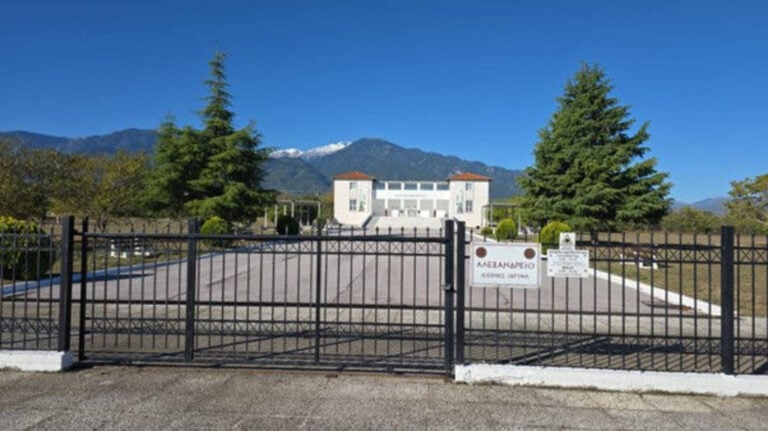 Alexandreion at Litochoro with Mount Olympos background.
Alexandreion at Litochoro with Mount Olympos background.
Yet, a visit to the village of Chalkiades brought a different kind of sorrow. The immediate, heartbreaking answer to my question—”Hardly anyone left now… The young people left for the big cities… and half of the elderly population has died”—confirmed the painful reality of Greek villages becoming ghost towns (χωριά φαντάσματα). The moment was a sudden, profound realization of the price of modernity and economic hardship.
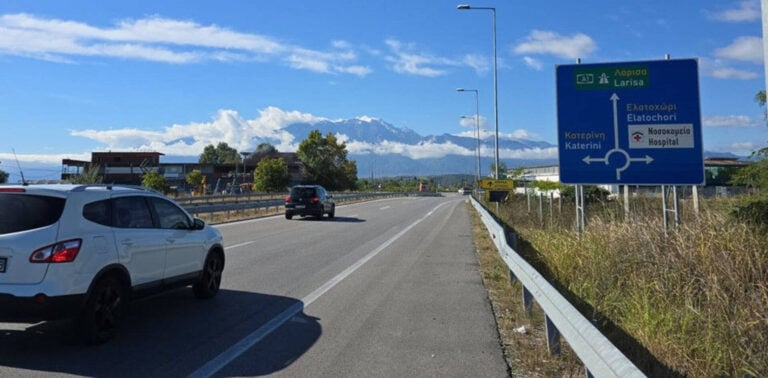 On the road to Larisa – Olympos in the distance.
On the road to Larisa – Olympos in the distance.
Heroism and humbling nights
The path to Lamia was a climb rewarded by panoramic views, leading toward the historical depth of Gorgopotamos and Gravia. Gorgopotamos’s iconic railway bridge stood as a monument to resistance and revolution, especially poignant for me as it held a piece of my family history: my father, a resistance fighter, helped blow it up in WWII. Looking up at the tall structure, I murmured a prayer for the heroes of both 1821 and 1942.
 The famous Gravia Inn (το Χάνι).
The famous Gravia Inn (το Χάνι).
The final push to Gravia meant a grueling, pushing ascent up Mount Oiti. In Gravia, the famous Hani, scene of the 1821 battle where 120 men led by Odysseas Androutsos bravely delayed the 8000-strong Ottoman army, deepened my appreciation for the resilience of the Greek people. But history offered a humbling surprise: all lodging was booked due to a wedding. For the first time, I was forced to huddle on a bench next to the Church of Saint Athanasios—an utterly basic, yet strangely fitting, end to a day of historical grandeur.
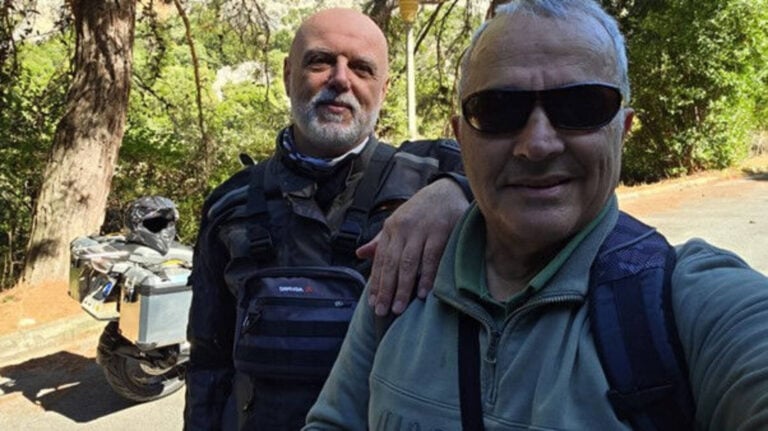 Dimitris from Karditsa and I at Tempi.
Dimitris from Karditsa and I at Tempi.
The final ascent to the sacred
In the tranquil villages of Neo Monastiri and Dikomo, kindness reigned supreme. I found refuge in bakeries and cafés, where conversations, tsipouro, and a game of tavli with locals like Christos and the Vice-Mayor of Domokos offered human connection. The local priest, upon hearing of my journey, called me “mad” (τρελός) and smiled, a recognition of the obsessive passion driving my ride.
Reaching Amfissa, surrounded by ancient, silver-leaved olive groves, felt like crossing a threshold.
 Alexandreion at Litochoro with Mount Olympos background.
Alexandreion at Litochoro with Mount Olympos background.
The ride to Delphi was a true pilgrimage (προσκύνημα). At Delphi, the ancient navel of the world (Ομφαλός της Γης), standing among the ruins of the Oracle and the Temple of Apollo, I was gripped by profound awe (καθαρτικό δέος). Climbing the slope to the Ancient Stadium, I felt complete (ολοκληρωμένος), a transcendent moment where the past and present merged. In the museum, facing the Charioteer of Delphi (Ηνίοχος) and the Kouroi, I experienced tears of joy, completely lost in the historical presence, seeing no one else around me.
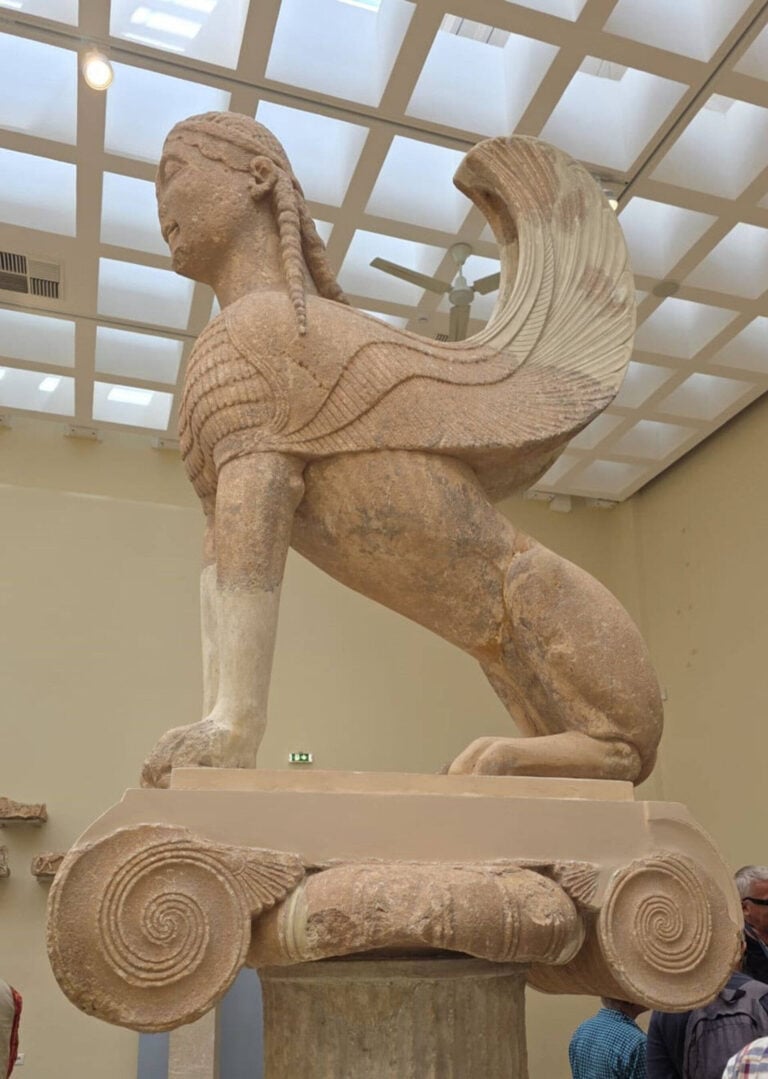 Sphinx at Delphi Museum.
Sphinx at Delphi Museum.
The short, steep climb to Arachova was the last physical hurdle before the final, bittersweet (γλυκόπικρο) leg to Livadia.
A magical rendezvous
Cycling from Thessaloniki to Livadia was a magical rendezvous between my innermost desire and the history I had only known in books. It was a voyage through the layers of Mythology and contemporary life. Every mile left its indelible mark, from the terror of the dogs and the pain of the fall to the selfless grace of Filotimo and the awe-inspiring silence of Delphi.
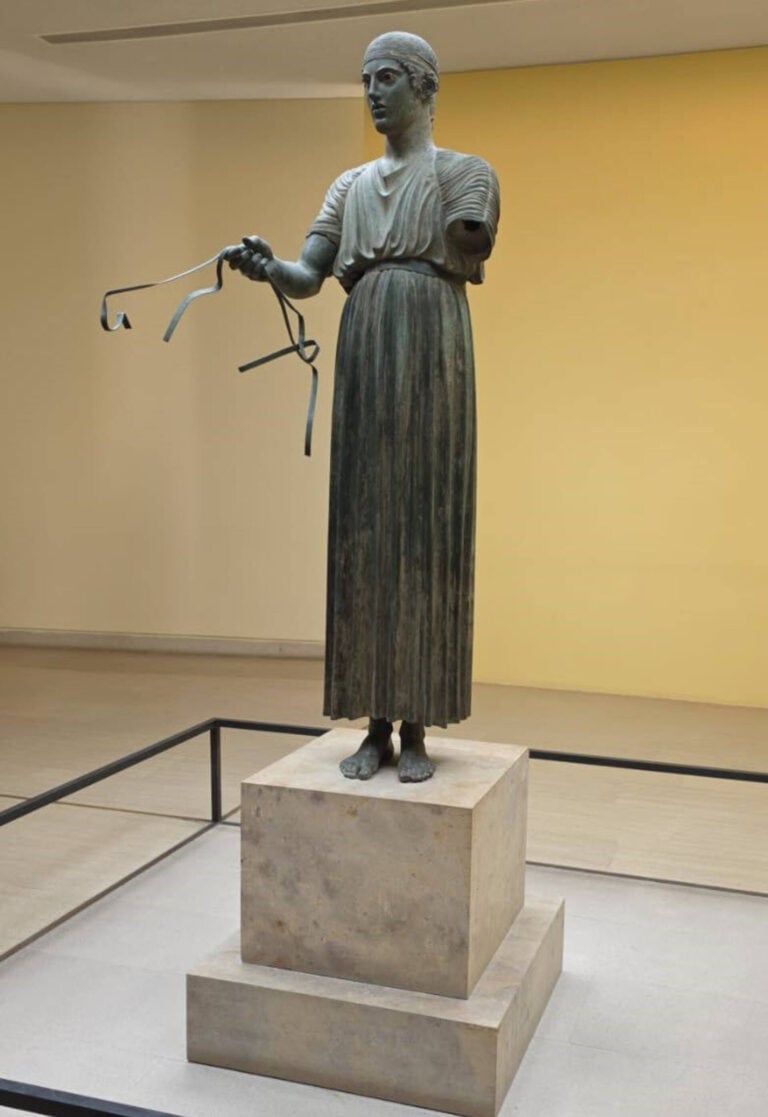 One of the most famous bronze statues of Ancient Greece “The Charioteer” at the Delphi Museum.
One of the most famous bronze statues of Ancient Greece “The Charioteer” at the Delphi Museum.
The entire experience was incredibly enchanting (άφθαστη μαγεία), urging others to discover Greece from the saddle, where the glorious past meets the resilient present at every turn. Yes, I travelled 1000 kms on two wheels and every turn will soon be summarised in a book. Sincere appreciation to all who supported me.
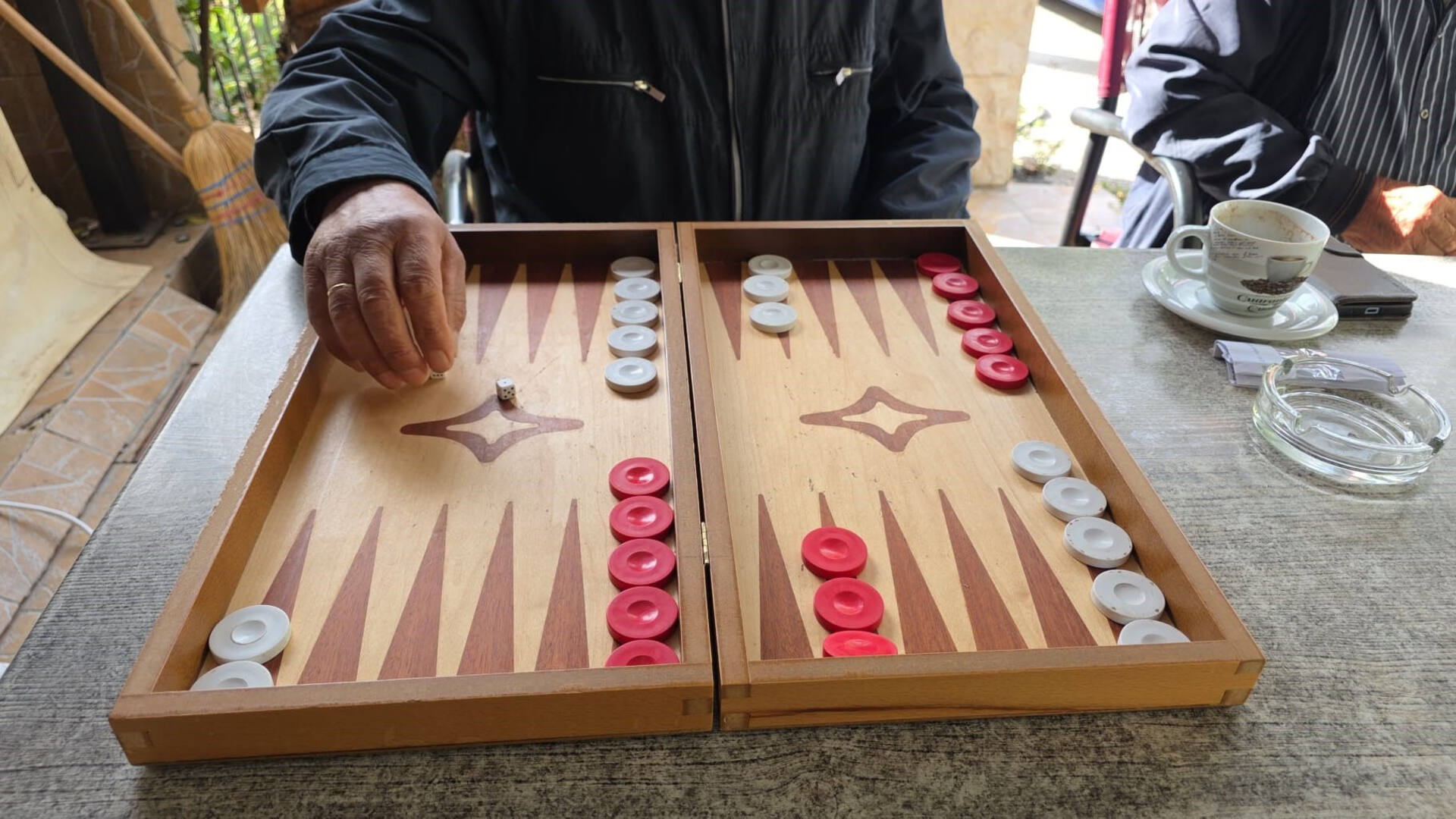 A round of Tavli with Christos at Neo Monastiri Kafenio.
A round of Tavli with Christos at Neo Monastiri Kafenio.

